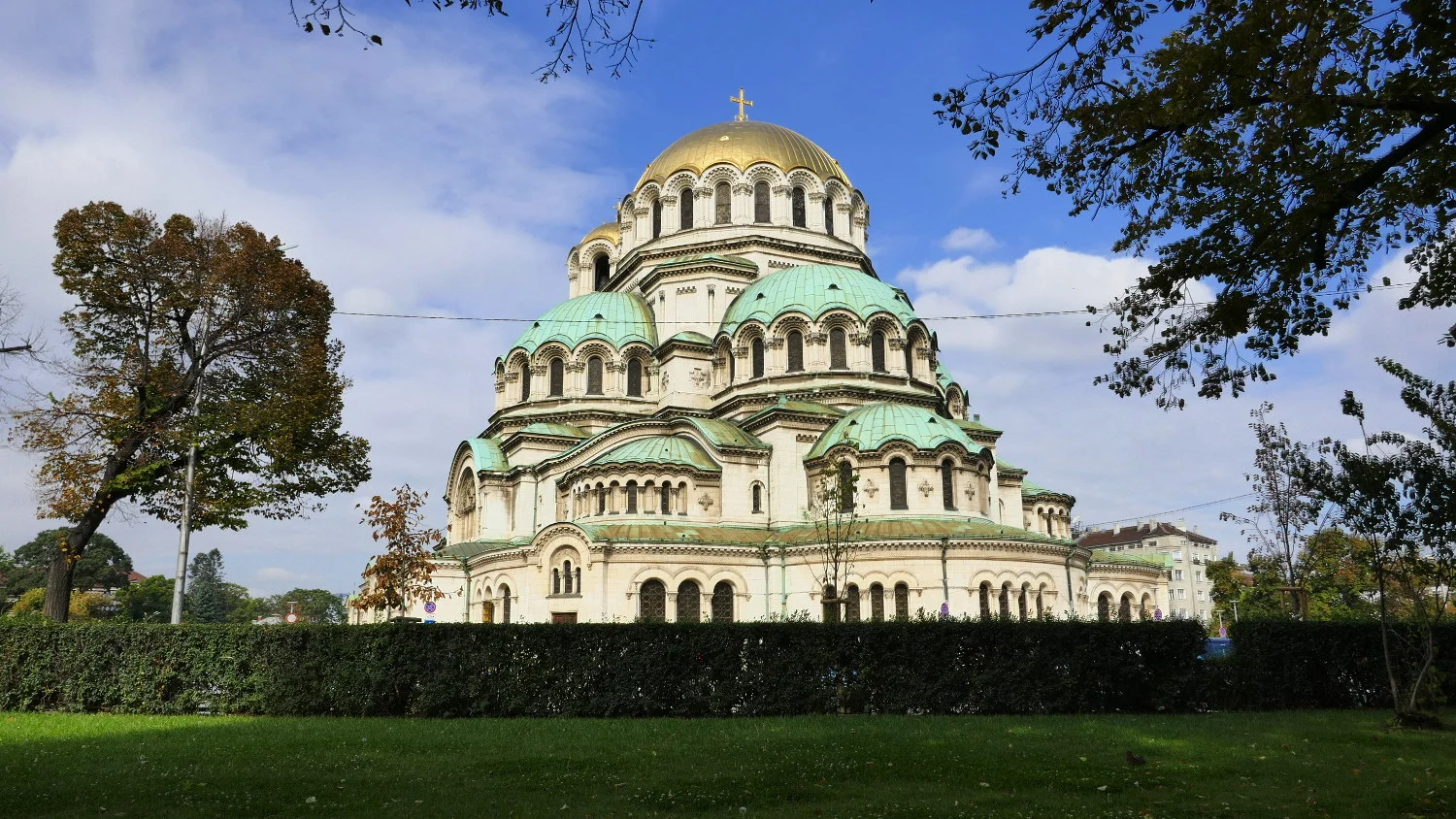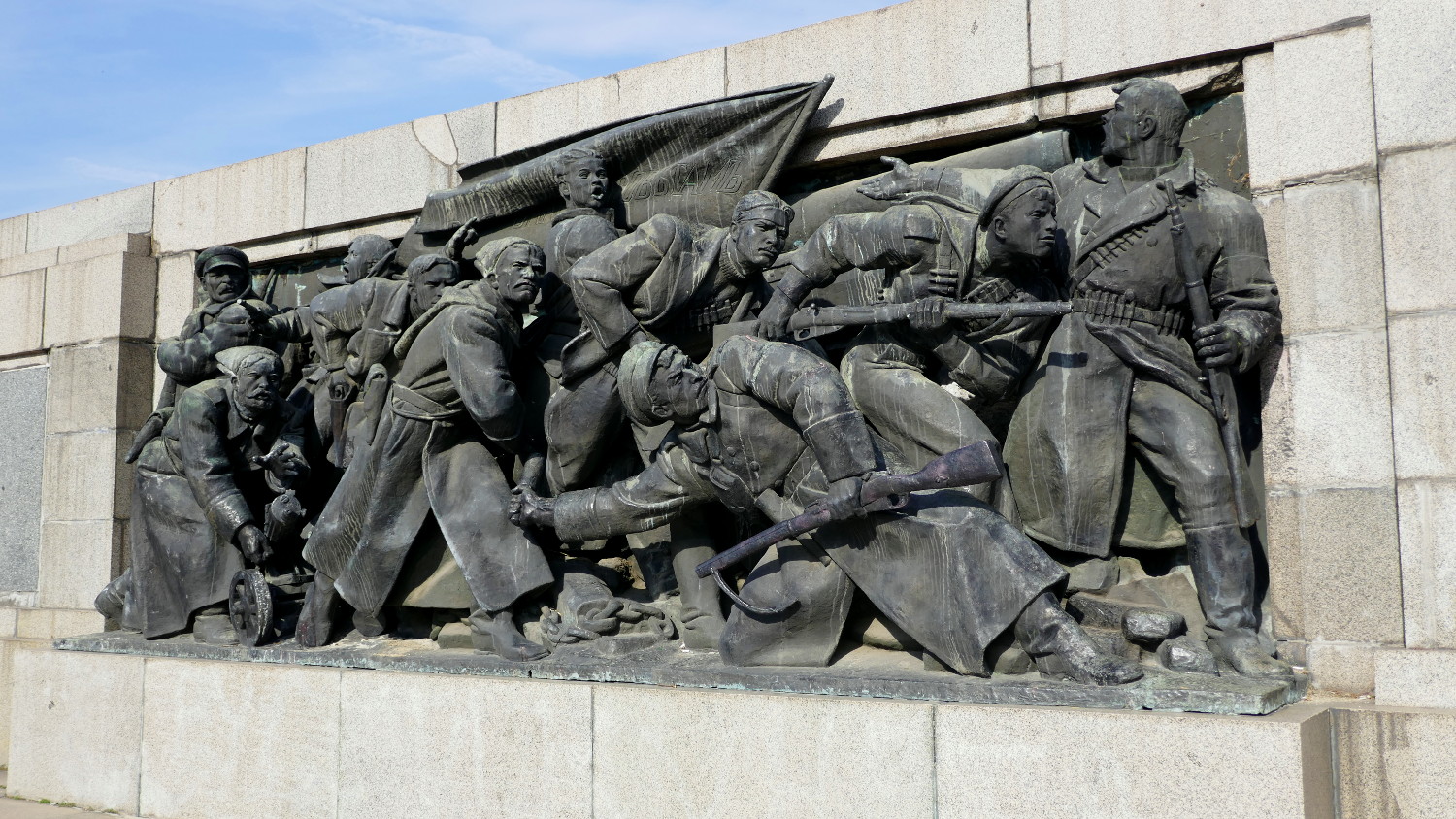City Guide to Sofia, Bulgaria: Part 2 | Public Transportation
Once we knew we were bound for Sofia, Bulgaria we did a bit of research to familiarize ourselves with public transportation. Here’s what we found as well as what we experienced firsthand, hopefully it’ll help you move around Sofia a bit easier!
Disclosure: We may receive a commission for links on our blog. You don’t have to use our links, but we’re very appreciative when you do. Thanks again for your support, we hope you find our posts and information helpful!
Public Transportation To and From Sofia Airport (SOF)
Getting to and from Sofia Airport from city center is a simple and inexpensive task. Travelers have two options, a bus or the metro, each one being the same cost for a single ticket (1.60 lv during our visit). We really appreciated that unlike other cities who charge a hefty fee for commuting to or from the airport, tickets are the same price in Sofia whether you’re traveling to the airport or a couple of stops within downtown.
Sofia Airport Metro
In our case, rather than take a bus we chose to take the metro to and from the Sofia Airport. We've found that metro systems are a bit easier to navigate, since they stop at every stop and usually have digital signs or announcements at each stop. This is especially helpful when you don't speak the language and it's a different alphabet. The metro station at the airport is located on the east side of Terminal 2, but if you arrived in Terminal 1, fear not, as the airport offers a free shuttle to Terminal 2 that can be boarded right outside of Terminal 1. We landed in Terminal 2 and consequently followed the blue line on the floor that led us to the exit of the terminal. Upon exiting the terminal, make an immediate left, follow the sidewalk to the end about 50 feet, and proceed to enter the door for the Metro that’s in front of you.
From the airport, you’ll be taking metro line 2 (M2), which is the blue line and takes about 20 minutes to get into city center Sofia, Bulgaria. Metro tickets can be purchased in the airport metro station from a cashier (who in our experience didn’t speak English) and only with cash. Alternatively, you can use one of the two automatic ticket machines, also found in the metro station. During our visit, one of the automatic ticket machines only accepted cash, while the other accepted cash and credit cards. We purchased two single tickets for 1.60 lv each, which had to be done in two separate transactions. There are also additional ticket options, which can be found on the Sofia Urban Mobility website.
Sofia Airport Bus
If you choose to take the bus, you can purchase tickets in the public areas of Terminal 1 or Terminal 2. The cost of a single ticket is 1.60 lv and only cash is accepted at the automated ticket machines.
Bus lines to and from the airport are 84, 184, and 384. Depending on the route, where you’re going, and the traffic, expect it to take anywhere from 25 to 45 minutes to get to Sofia, Bulgaria city center. When landing in Sofia if you arrive in Terminal 2, upon exiting into the public waiting area, follow the red line on the floor to find the bus stop. If you have trouble finding the ticket machines or buses, we recommend asking for help at the information center within the airport; when we asked questions, they were very helpful and spoke English.
For additional information on transport to and from the airport, visit the Sofia Airport website.
Tip: If you’re traveling with baggage that exceeds 60 х 40 х 40 cm (23 x 15 x 15 in), you’ll need to purchase an additional public transportation ticket for it.
Public Transportation in Sofia, Bulgaria
Sofia public transportation includes a metro network, buses, trams, and trolleybuses. Tickets are the same cost whether you’re traveling on the metro, or on a bus, tram, or trolleybus. However, the metro requires a different ticket than the rest of the system, meaning you can’t buy a ticket for the metro and use it on a tram, a bus, or a trolleybus. Here’s a bit more detail on each system:
Sofia Metro
There are currently two metro lines in Sofia: Metro 1 – the red line, and Metro 2, the blue line. Although a third metro line is in the works, and will likely become the green line upon completion. Metro lines operate from 5:30 am to 11:30 pm, and run between 5 and 15 minute intervals.
Sofia Metro Tickets
Tickets can be purchased at all Sofia metro stations, either from the ticket offices staffed by an attendant, or from the automatic ticket machines. The two times we attempted to seek the help of an attendant, the attendant didn’t speak English. Fortunately, we managed to ask questions and purchase tickets by using hand gestures and the translation app on our phone. We also discovered that newer stations are equipped with automatic ticket machines that accept credit cards (MasterCard and Visa), but older stations only had machines that accept coins.
TIP: We’d recommend having cash (coins) at all times, since it may prove challenging remembering which station does or doesn’t have automatic ticket machines that accept credit cards.
A single ticket costs 1.60 lv and is valid for 30 minutes after validation. On the other hand, you can purchase an electronic reloadable card loaded with 10 tickets for 12.00 lv plus a one time, non-refundable 4.00 lv fee. A great feature of the electronic card is that multiple riders can share the same card to pay for their individual fares. When using the reloadable card with more than one rider while on the same journey, the first person should scan the card and pass through the turnstile. Once on the other side of the turnstile, they should hand the card to the second person (and so on), allowing the additional passengers in the party to pay for their journey. More ticket options can be found on the Sofia Urban Mobility website.
When entering a Sofia metro station, be sure to validate your ticket by inserting it into the slot of the turnstile. Upon validating you ticket, it’ll be stamped with the current time and date, thus opening the gate and allowing you to proceed to the train platforms. Not validating your ticket could result in a fine if you’re ticket is inspected.
Sofia Bus, Tram, Trolleybus
Since there’s a wide network of buses, trams, and trolleybuses in Sofia, you shouldn’t have much trouble getting to your chosen destination. The age of the vehicles range from newer air-conditioned cars to vintage, so be prepared for all types of experiences! The public transportation network operates between 5:30 am and 11 pm, and unfortunately (as of our visit), doesn’t offer night buses.
Sofia Bus, Tram, and Trolleybus Tickets
Passengers can purchase tickets for the bus, tram, or trolleybus from the driver with exact cash, from machines on board select trams and trolleybuses (cash only), or from ticket offices located at larger stops. Our recommendation is to be prepared and purchase your ticket before boarding if possible. Moreover, don’t forget to validate your ticket when you board the vehicle. You can board the vehicle from any door, and you’ll want to make your way to the small ticket validating machine. Once you’ve fed your ticket into the slot, your ticket will be stamped, thus completing the validation process.
Single tickets cost 1.60 lv, are good for one journey, and don’t allow transfers to any other vehicle. If you prefer, you can purchase a set of ten tickets for 12 lv, however they’re valid for only one person (meaning they can’t be used by multiple riders on the same journey). Another option is a day pass that’s valid for unlimited rides on the bus, tram, and trolleybus, which costs 4 lv. More ticket options can be found on the Sofia Urban Mobility website.
Sofia, Bulgaria Public Transportation Tips
- Additional information, including an app for the Sofia Metro (currently only available on Google Play), can be found at MetroSofia.com. You may also find metropolitan.bg and Urban Mobility Center of Sofia helpful.
- The color designations for the metro lines (M1 – red, and M2 – blue) are helpful in navigating the system, but surprisingly you’ll find they aren’t used logically and ubiquitously throughout the network’s signage. For example, some maps on the metro trains clearly show the lines correctly as red and blue. However the signs above the doors on the metro trains, the ones that have a light indicating previous stops (solid red) and the upcoming stop (flashing red), are a bit confusing. The colors on these maps seemed to be flipped. But if you look closely you'll see a very faded red and blue line that designate each metro line.
- Writing on signage and maps can be small and metros can become quite full of passengers. So to not obstruct your view, we recommend positioning yourself near a sign/map when riding on the Sofia metro.
- There are four ways to know what stop you’re at (or approaching) when on the metro.
- When approaching a stop, an announcement is made in both Bulgarian and English.
- On the train, there are signs above the doors that shows each stop the train makes. These signs have a corresponding light to indicate previous stops (a solid red light), the next stop (a flashing red light), and upcoming stops (no light).
- Mounted on the roof throughout the train are digital signs that scroll train and stop information. Most of the information given is in Bulgarian, however if you’re patient, you’ll eventually see the next stop in English.
- The least reliable option, as it can’t be seen from within all spots on the train, is to look for the large signs posted outside of the train as you approach a station. They're interspersed throughout the station and if you’re sitting or standing in the right spot when the train comes to a halt, you’ll be able to see it.
- When purchasing tickets, your best off having cash and if possible, coins. While some metro ticket machines accept credit cards, you don’t want to be left stranded if the machine is out of order.
- Most people speak some amount of English, so if you need help just ask someone. Even if the official transport employees or security don’t speak English, don’t be timid, go ahead and ask a passerby, they’ll more than likely be willing to help!
Final Thoughts
We found public transportation in Sofia, Bulgaria to be a great option to getting around the city. It was clean, fast, and inexpensive! While in city center, we could easily get to most of the attractions on foot, however for the places we wanted to go that were a bit further out, like the Sofia Airport, we were very grateful for Sofia’s public transportation system!






